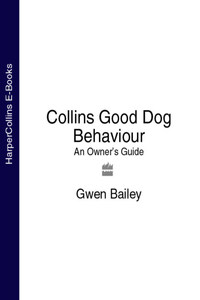Almost every owner would like a dog that is loyal, friendly, never naughty and obeys their every command. Most people, however, live with a dog whose behaviour is less than perfect and are tolerant of a wide variety of behaviour that does not conform to their idea of good conduct. However, it is possible for everyone to have a well-behaved dog. All that is required is that the owner develops a better understanding of their dog and changes the way they behave towards him. This book will help you to do this.
WHY IS YOUR DOG LIKE HE IS?
A dog’s adult character depends on both the genes passed on to him by his parents and ancestors and the environment he has lived in throughout his life. Both will have an effect on his personality, his temperament and qualities, and, consequently, on the way he behaves.
Genetic influences in dogs are very profound. Our present-day dogs are all descendants of the wolves. Wolves are efficient predators of large prey that hunt co-operatively in packs. To do this they need to be sociable and communicative; both traits that make them excellent precursors of our domestic dogs.
Terriers enjoy games with toys that squeak because they were bred to catch and kill small animals.
In addition, the wolves have an instinctive hunting behaviour which gave them a suitable template to exploit in order to produce the working breeds. We selected the qualities we most admired and created a whole range of dogs to suit different purposes. Different breeds have specific traits that their ancestors required for their ‘job’. For example, Collies are born with a strong instinct to chase and herd moving objects, Terriers enjoy shake and kill games, particularly with objects that squeak, Dachshunds and Terriers which are bred to ‘go to ground’ like to dig, and Bull Terriers like to hang on to objects and tug.
Puppies learn about each other’s strengths and weaknesses as they play together.
While genes have given our dogs the blueprint for behaviour, the environment in which they live helps develop and strengthen behaviour patterns. Dogs that are raised and kept in different situations will have different characters. Thus, for example, a pet dog raised from a very early age in a kind home with lots of children and animals is likely to be friendly, playful and sociable, whereas a dog kept shut away for most of the time is likely to be shy and fearful. A dog raised with overbearing owners will possibly have a low opinion of his own abilities whereas a dog kept with very indulgent, easy-going owners is likely to be more confident.








